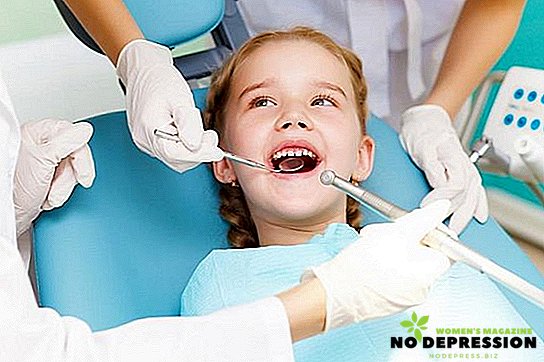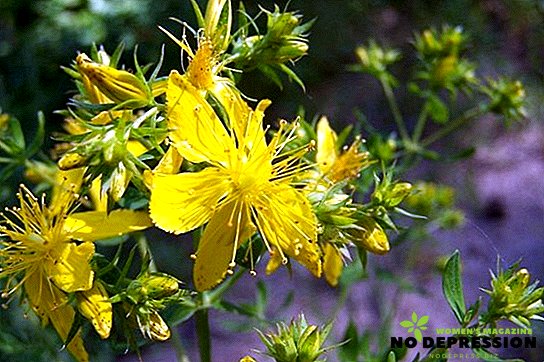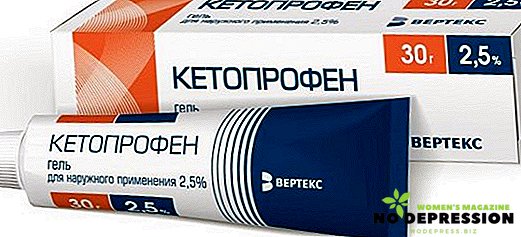Adenoids are lymphatic tissue that is located in the nasopharynx. It serves to protect the respiratory tract of the child from infection of the unformed organism and other harmful effects.
The inflammatory process in the adenoids is a common problem for children aged about 3-7 years. The growth of lymphatic tissues is also quite widely found in children aged from a year to 15 years. There are several ways to treat pathology.

Causes of adenoid inflammation in children
In childhood, the immune system is formed, the body adapts its defense systems to various infections, viruses and bacteria. Several factors affect the state of the child’s body:
- The general state of the immune system of the baby, its ability to resist various external influences. This feature is one of the most important, since the presence of immunodeficiency contributes to the growth of adenoids.
- The presence of allergies helps to increase the load on the adenoids, the consequence of which is their increase.
- Chronic pathologies in the area of the nasopharynx and oral cavity, such as pharyngitis, caries, stomatitis and others.
- Living the child in an environment with unfavorable ecology. Strong air pollution with gases and waste from chemical plants, prolonged stay or living in a room with a strong dustiness adversely affect the child’s body and cause an inflammatory process due to the constant influence of harmful irritants.
- One of the factors in the growth of lymphatic tissue is lymphatic diathesis. It is a deviation in the structure of systems such as endocrine and lymphatic. Most often, this disease is accompanied not only by an enlarged amygdala in a child, but also by additional symptoms - a sluggish state, apathy, and a tendency to be overweight.
Parents have no less strong influence on the development of this pathology in their child. It is necessary to monitor its nutrition during breastfeeding and at an older age, as well as timely treatment of emerging diseases.
General characteristics of the disease
In the nasal cavity there is an amygdala, which is the formation of lymphoid tissue. The nasopharyngeal tonsil is responsible for protecting the child’s body and maintaining the normal functioning of its immune system.
Adenoids are called a strong increase in the amygdala in volume, the consequence of which is its transformation from the defense system into the focus of infection.
Because of this disease, the air that is inhaled by the child does not undergo the process of cleansing and moisturizing, penetrating directly into the rest of the respiratory system. Due to the lack of filtration, the immune system weakens, which contributes to the easy infection of the child with colds and an increase in the proliferation of the disease.
There are 3 degrees of pathology:

- Stage 1 - breathing is difficult only during sleep, there is a hoarseness and rare snoring;
- Grade 2 - breathing is complicated during the day, the child breathes regularly with the help of the mouth, snoring during sleep;
- Stage 3 - lymphatic tissue completely blocks the flow of oxygen through the nose, the child begins to breathe only through the mouth.
Symptoms of inflammation of the nasopharyngeal tonsil
The main sign of the formation of the inflammatory process in the nasopharynx becomes obstructed air flow during breathing through the nose. The growth of the adenoids is also accompanied by migraines, poor health, fatigue, nasal discharge, constant or rare breathing with the help of the mouth.
Symptoms of adenoids are also characterized by anemia, impaired functioning of the gastrointestinal tract, increased body temperature, and an increase in lymph nodes.
Because of the difficulty in nasal breathing, the child in most cases suffices with air during sleep, which makes the rest of the night restless. Snoring appears, apnea syndrome - breath holding during sleep. For these reasons, children may have unpleasant dreams and nightmares, attacks of suffocation due to sticking of the lingual root.
The consequence of adenoids is the worsening of problems with the respiratory system. The development of such chronic pathology as rhinitis begins, and a frequent cough appears. The inflammatory process can appear in the auditory organs - otitis develops. The voice also changes, gradually becoming more nasal. Disturbances of timbre occur in the last stages of the growth of the tonsil.
Because of the adenoids, inflammatory processes of the paranasal sinuses often occur - sinusitis, sore throat, bronchitis. The shape of the face is also changing due to constant breathing through the mouth. Due to the long course of the disease, the lower jaw becomes longer and narrower, the bite is bent.

Mouth breathing is more superficial. Due to this type, the production of air is significantly less than with nasal breathing, which contributes to oxygen starvation of the body due to poorly ventilated pulmonary bags. Brain hypoxia occurs.
Insufficient oxygen supply causes memory loss and mental impairment. Attention becomes distracted, rapid fatigability, constant drowsiness and severe irritability appear. Reduced performance in educational institutions.
Non-surgical treatment of adenoids
There are various ways of treating adenoids that do not include surgery.
Tips Komarovsky
According to this doctor, modern methods of diagnosing pathology and proper timely treatment will help get rid of the symptoms of the disease and eliminate unpleasant consequences. Based on his words, it can be concluded that treatment without surgical intervention is possible only in non-admitted cases.
Komarovsky argues that a complete treatment, which results in a reduction in the size of the nasopharyngeal tonsil, should include several complexes. There are various types of conservative methods and physiotherapy.
Respiratory gymnastics according to Buteyko method
This method is a set of exercises, which will contribute to the rapid restoration of breathing. It will not help to completely eliminate problems with the respiratory system, but it will have a strong effect if it is used together with complex therapy.
The undoubted advantage is that gymnastics can be performed in any convenient place. Continuous use of this method will help to avoid surgery. It is used not only for the treatment of adenoids, but also as a preventive measure for other pathologies.
Respiratory gymnastics Buteyko begins with training. It is necessary to sit comfortably in a chair and lift the collections, to relax the body a little. Inhalations and exhalations are made only through the nasal cavity and should not be deep. Preparatory exercises must be performed within 10 minutes.
After preparation follows the beginning of the main complex, which begins with nasal breathing. Take a slow breath, stretching it for 5 seconds. Then the same slow exhale. At the end of the job, hold the air for the same amount of time.
Then repeat the same steps with a time interval of 7-8 seconds. When you inhale, you must first use the diaphragm. The next exercise is to draw in the air alternately in each of the nostrils, then inhale the belly. Each of these tasks must be repeated ten times.
A short video contains a detailed description of the Buteyko breathing technique.
Homeopathy
This type of treatment is aimed at improving the function of the resistance of the child's body, strengthening the immune system. This will help the body to overcome the source of infection in the adenoid tissue. Homeopathy generally takes 1 to 3 months. This is the most comfortable therapy possible.
Medical specialist conducts a thorough selection of drugs for treatment. Selection is based on a variety of factors, from pregnancy and childbirth to the child’s age. Homeopathic medicines tend to reduce puffiness and eliminate inflammation.
Nasal wash
Flush the nasal cavity can be children older than 5-6 years. After the nose is cleared, the drops prescribed by the attending doctor are buried. Children under 3 years old should remove mucus using a small syringe.
Folk remedies
There are many different recipes used to treat enlarged adenoids:
- Carrot Juice You need to squeeze the juice from pureed carrots,
 using 5 layers of gauze fabric. Drink a quarter cup per day. Can be used as nasal drops (3 times a day, 5 drops).
using 5 layers of gauze fabric. Drink a quarter cup per day. Can be used as nasal drops (3 times a day, 5 drops). - Salt solution for washing the nasal cavity. You want to mix half a teaspoon of sea salt and a glass of water.
- Decoctions of herbs. Broths of chamomile, oak bark and sage are also used for rinsing the nose.
- Beet juice with honey. Squeeze the juice from finely worn beets using 5 layers of gauze fabric. Mix the ingredients - beet juice and honey in this proportion: 1 glass of juice to 1 tablespoon of honey. The resulting solution is preferably used as nasal drops 3 times a day for 5 droplets.
Advantages of conservative treatment methods over surgery
Medicine offers many different non-surgical methods of treatment of adenoids, including folk remedies. As a rule, conservative methods, unlike surgery, are always safer. Since the result of the operation may be not only the absence of a part of the nasopharyngeal tonsil, but also such adverse effects as sky damage and complications after anesthesia.
All about the treatment of adenoids in children can be found in this video.
After surgery, the risk of recurrence of the inflammatory process does not completely disappear. Treatment of the adenoids in the early stages by conservative methods will help to avoid operations that can cause dangerous consequences for the child's health.


 using 5 layers of gauze fabric. Drink a quarter cup per day. Can be used as nasal drops (3 times a day, 5 drops).
using 5 layers of gauze fabric. Drink a quarter cup per day. Can be used as nasal drops (3 times a day, 5 drops).









